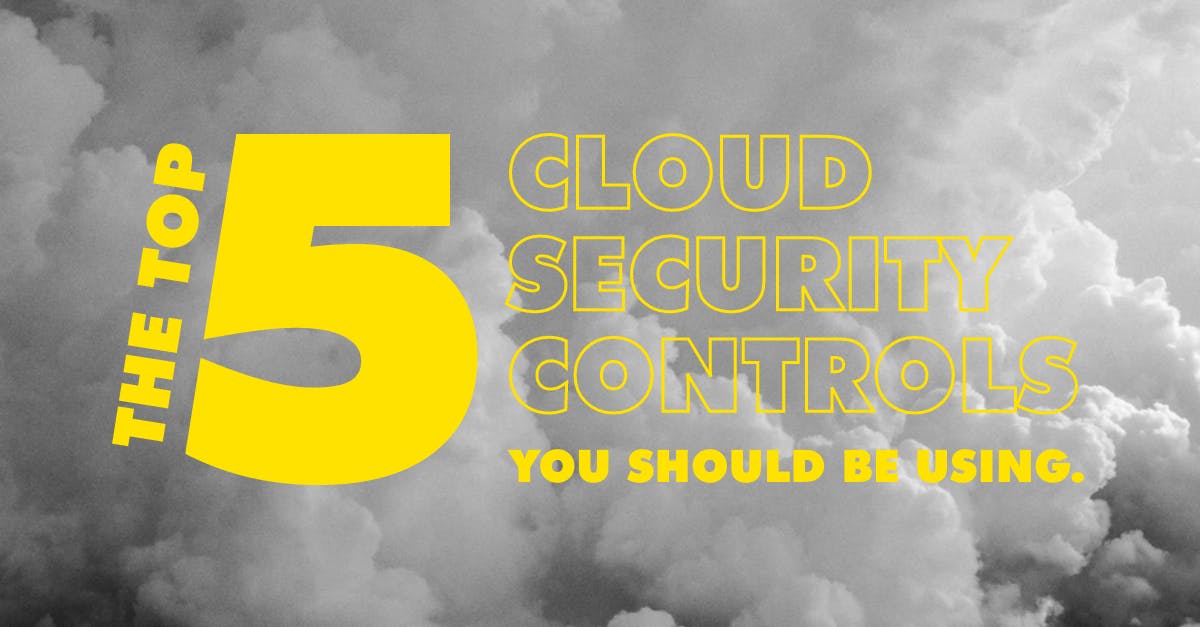With cloud environments increasing in size and number and cloud service providers releasing new services and features each year, it pays for organizations to continuously shore up their cloud defenses. In a recent report from cloud security standard organization Cloud Security Alliance (CSA), cloud misconfigurations remain the top risk plaguing cloud environments. Research firm Gartner further validates this and says that nearly all successful attacks in the cloud originated from customer errors.
Why Are Cloud Security Controls Needed?
Under the shared responsibility modelshared responsibility model, the customer — essentially, your organization — is as responsible for security in the cloud as the cloud service provider. As such, do stay up to update with the latest security standards and best practices of your cloud configurations. Not only can you prevent and mitigate the major cloud threats today, doing this also ensures you stay compliant with various laws and regulations that govern your organization. Check out this other article for the 13 major cloud compliance frameworks13 major cloud compliance frameworks for organizations using Infrastructure-as-a-Service (IaaS).
1. Apply the Principle of Least Privilege to Access Controls
The principle of least privilege states that any entity should only be given the minimum privilege needed to complete its task. Setting up your controls with this principle in mind tightens your cloud security and limits your risk of both malicious and unintentional disruptions.
- Avoid using root or owner accounts for any task beyond those only that type of account can do.
- Limit the number of users with privileged access. Make use of groups or roles to easily manage access controls across multiple users within an organization.
- Use temporary credentials in cases where users require temporary privileges to certain cloud resources.
- Audit access rights regularly to ensure everyone has the minimum access they need.
Excessive account permissions go against the least privilege principle and may significantly increase the impact of a breach by allowing attackers to move laterally inside an organization’s cloud environment.
2. Harden User Authentication
Weak authentication is a key security risk in all enterprises across all IT services, and cloud
infrastructure is no exception. Some of the biggest user authentication risks include weak password policies or lack of multi-factor authentication (MFA).
- Set your password policy to require a sufficient length and a mix of letters (both upper- and lower-case), numbers, and symbols.
- Enforce policies on password expiration and password reuse.
- Require MFA for all users in your organization when accessing cloud resources.
3. Restrict Access to Services
Overly permissive access rules that result in resources being directly exposed to the internet are some of the root causes of many major security breaches in the cloud.
- Make sure only public resources are public, and everything internal to your organization stays internal. Implement defense-in-depth through a combination of firewalls, network segmentation, and access controls.
- Limit access to your storage buckets and database instances. Make sure they are not publicly accessible to the world.
- Restrict access to protocols like SSH and RDP to trusted network ranges as they can be gateways for unauthorized users to traverse your network. Despite being secure protocols, attackers can connect to your network through these protocols if left open.
Attackers continuously scan IP ranges of Cloud Service Providers (CSPs) for accessible resources that may be unprotected. Much of the danger lies in the fact that it is much easier to misconfigure your cloud resources to be opened up to the world than you can with on-premise resources.
Restricting access to various services close up holes attackers can use to gain access to your environment through vulnerabilities within a particular service.
4. Activate Encryption At-Rest and In-Transit
Encryption is a means of scrambling the data so that only authorized users can decipher the information. It helps protect the confidentiality of data while stored in the cloud, or when transmitted from one location to another.
- Activate encryption both at-rest and in-transit wherever possible.
- Control your encryption keys if needed. While cloud providers can provide keys that they manage and own, you can take it a step further by managing those keys on your own, or bringing your own keys depending on your needs.
- Use the latest cryptographic standards. Some older standards have known weaknesses that have been successfully cracked, defeating the purpose of encryption.
- Regularly rotate your encryption keys (and turn on automatic rotation when you can). This gives an attacker only a smaller window of opportunity to take advantage of a compromised encryption key or data.
Lack of encryption in-transit can be a significant compliance risk when sensitive application traffic is not protected, opening the door to man-in-the-middle attacks.
Encryption at-rest, on the other hand, acts as a failsafe mechanism in information security - even if an unauthorized user does manage to gain access to the encrypted data, they will not be able to use it without the means to decrypt it.
5. Implement Cloud Audit Logging and Monitoring
Finally, set up logging and monitoring in your cloud environment. Such measures can help you:
- Detect a potential or actual intrusion or abuse early
- Understand the extent or impact of a breach eg. which data was exfiltrated, how long an attacker remained in the network
- Respond to a breach appropriately to stop an attacker
- Know whether the attacker has retained access to the system
If cloud infrastructure follows a self-service model with application or project teams managing their infrastructure directly, then there will be a greater need for centralized visibility. Security teams can’t protect what they can’t see, leaving invisible resources vulnerable as they may not be managed or monitored for risks.
Here’s where Cloud Security Posture Management (CSPM) toolsCloud Security Posture Management (CSPM) tools comes in: at its core, CSPM software detects cloud misconfigurations that put an enterprise at risk of security breaches or compliance violations. It uses cloud provider APIs to monitor the configuration of cloud resources against the desired security posture.
For more information on how a CSPM tool is the most efficient way to protect cloud environmentsCSPM tool is the most efficient way to protect cloud environments, read this whitepaper: What is a CSPM and How to Select One.




